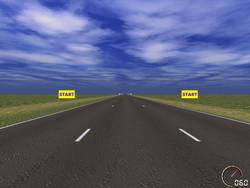
Dipl.-Inf. Florian Hönig
Alumnus of the Pattern Recognition Lab of the Friedrich-Alexander-Universität Erlangen-Nürnberg
Physiological Signal Processing
Affective processes have physiological correlates. Analyzing physiological signals is therefore an intriguing possibility for getting information about the affective state of the user. This can be used to make future Human-Computer-Interfaces nicer, safer and more efficient. This research is exploring and developing methods to make feasible the online, user-independent recognition of the current affective user state from physiological measurements. As an Exemplar, stress states in an automotive context are studied.
Data collection
Two challenges arise when collecting affective databases of physiological signals: Motion Artefacts in the recorded signals and arousing the different desired affective states and/or the annotation of the actually occurring states.
In our approach, we minimize motion artefacts by having participants drive a pc-based driving simulation with one hand only - the other hand is reserved for sensors. We use the Lane Change Task (LCT) developed by Daimler-Crysler to assess driver distraction - a heavily constrained scenario which provides constant driving demands and yields objectives measures such as mean lane deviation or reaction time.



Different levels of stress are elicited by giving the participants different tasks, partly on top of the driving:

The effectiveness of this approach is confirmed both by subjective self-assessment of the participants and by objective measures derived from the driving simulation. The structured design of the experiment can be used to obtain a preliminary ground truth. However, for studying user state transitions this is not enough. Therefore, a manual, fine-grained annotation of the perceived stress level has been created based on the video and audio recordings of the experiments by three labellers.

Feature Extraction and Classification
In order to cope with signal failure or temporary signal corruption by artefacts, each valid signal is first analyzed separately. A relatively large number of generic features like mean, standard deviation etc. are extracted from multiple analysis windows and then reduced with a datadriven transform, linear discriminant analysis (LDA). A Gaussian Mixture Classifier assigns class probabilities to each signal; they are fused probabilistically to yield the final decision. For discriminating between driving segments with and without additional tasks, a recognition rate of over 90% is achieved in a 10-fold user-independent crossvalidation.




